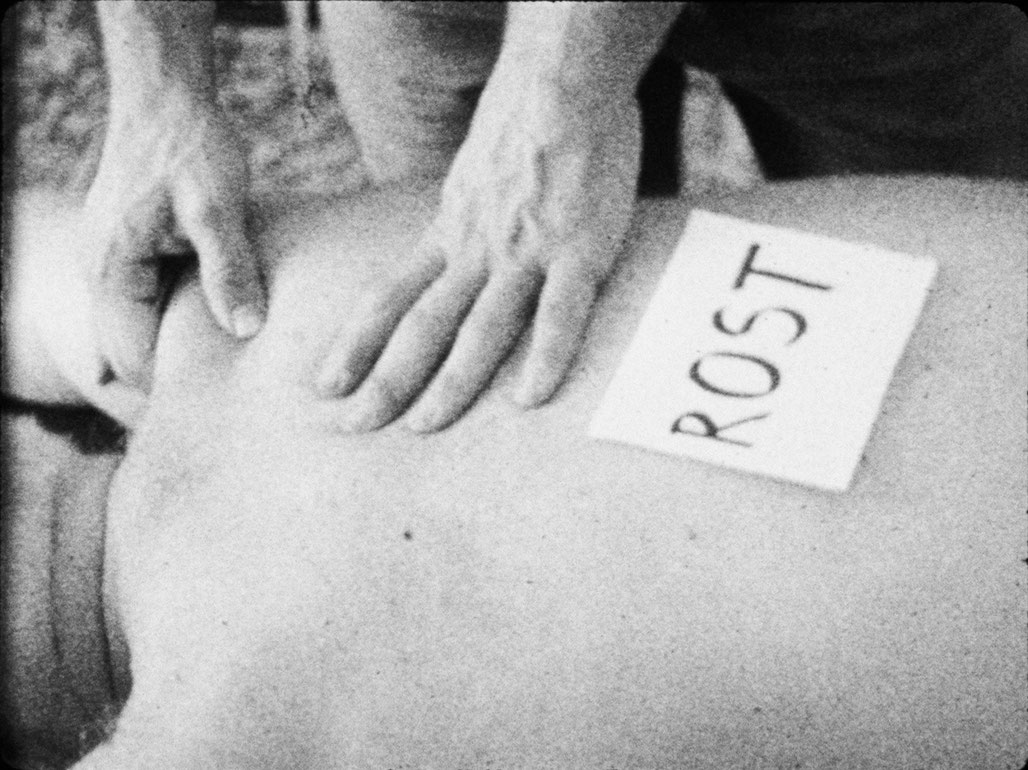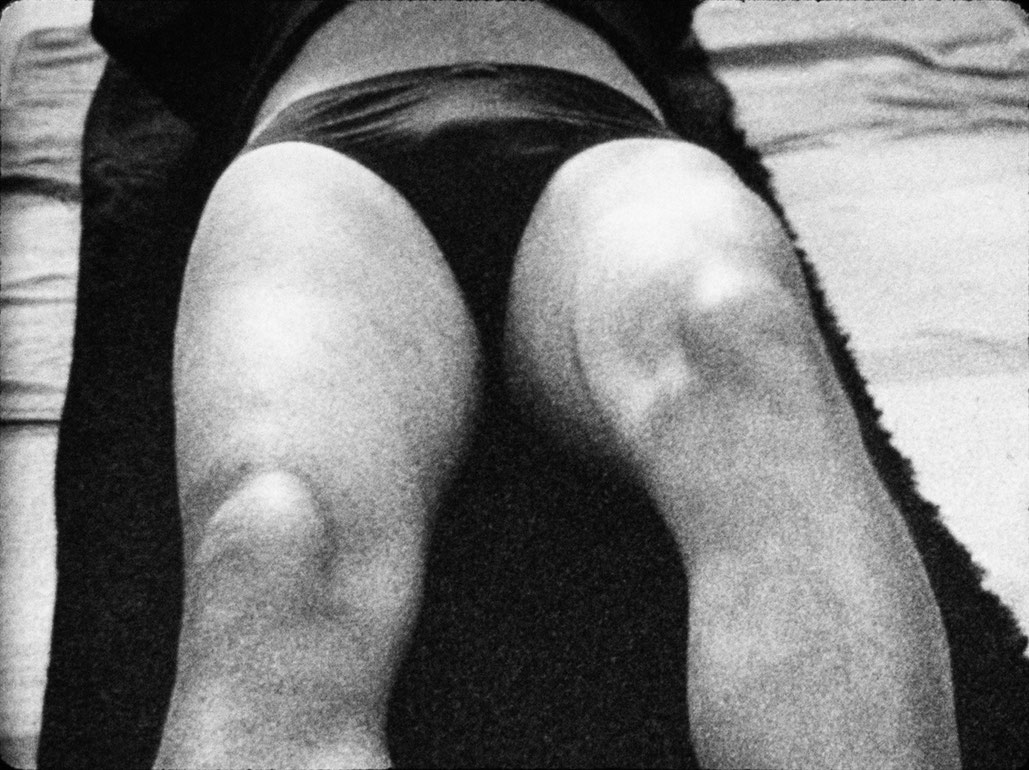Rust
Tired. Emaciated. Carinthian Benedictine and artist Switbert Lobisser did not exactly depict Saint Christopher as a robust hero. The ravages of time have already taken a substantial toll on the giant. But he carries the Christ Child and with him the weight of the entire world on shoulders that remain strong. Like Christopher himself, the stick on which he leans appears nearly as gnarled as the trunk of an ancient grapevine. His years add heavily to the travail of his mission.
Friedl vom Gröller´s Rust starts by gazing into the strained face of the saint. The artist herself reads "Holzschnitt", or woodcut, rather as "Höllenszene", a scene of Hell – perhaps because it appears as if animate nature is trying to force the giant to the ground. Gradually emerging from blurriness in the film, the hero defies fate – at least initially. In so doing, he sets the agenda for Gröller´s figures: Rust is about delaying the deterioration that comes with time. Three so-called "best agers" act according to the saying, "If you rest, you rust," training their muscles, stretching their fascia, staying on the move.
Gröller echoes the hard contrasts of the woodcut with her back-lit images. This time around her film does not concentrate on faces but rather focuses on bodies in motion which the camera in part scans like abstract landscapes. In previous works the filmmaker and psychoanalyst provoked her figures through interactions that moved them to shed their mask-like demeanors and reveal something of themselves by way of their facial expression. In Rust it is the movement of the bodies that animates the faces. And in perfect contrast to the visage of St. Christopher, they do not express suffering but rather joy, even pleasure. They radiate self-assured calm, countering childlike exuberance with graceful joy of movement. (Anne Katrin Feßler)
Translation: Eve Heller
Rost
2019
Austria
6 min



